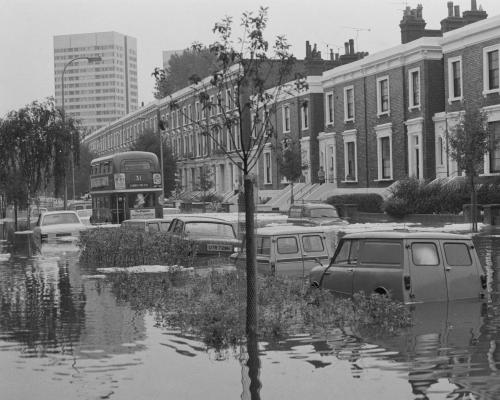
On the afternoon of 14 August 1975 the thunderstorms that developed across eastern England included a particularly intense outbreak in north London that became known as the Hampstead Storm.
This storm brought an astonishing 170.8mm (6.72in) of precipitation over a 24-hour period, the largest daily total recorded in the London area. Almost all of it fell in a colossal downpour of rain and hail from 5.30pm to 8.00pm.
According to the New York Times travel writer John Hillaby, the rain was so intense it “fell in misty sheets with a noise like boiling fat”.
Stormwater sewers were quickly overwhelmed and the rivers Tyburn, Fleet and Brent burst their banks to flood gardens and streets. Torrents of water flowed into the underground, causing electrical faults and shutting down the Bakerloo and Metropolitan lines. Reports described cars floating down streets that had turned into canals.
Overflows of raw sewage mixed with the flood water, and hundreds of people were forced to leave their homes as basement flats were inundated. Newspaper photographs showed evacuees in small boats pulled by emergency workers.
In a subsequent inquiry, the chair of the Greater London council public services committee insisted the sewers were in fact adequate. But, like other sewers, they were never intended to handle a deluge of such biblical proportions.





